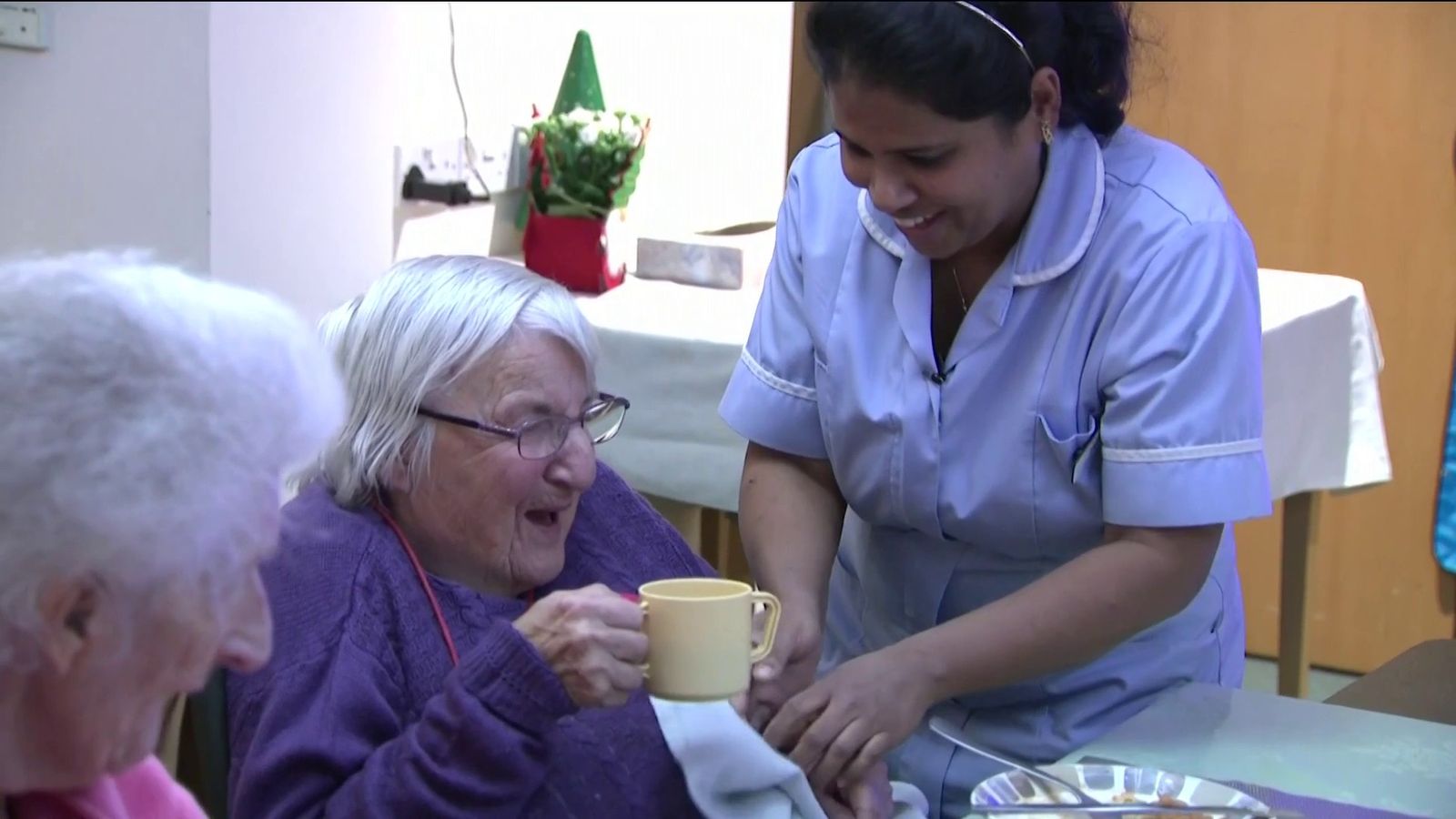The Home Office immigration system statistics for 2023 tell a different story to the one that dominates the political discourse.
While government commentary and policy has focused on illegal migration via small boats, the largest driver of rising immigration is people coming to work, primarily in a health and care sector that would not function without them.
Some 616,000 work visas were issued in 2023, 337,240 to “primary applicants”, up 26% on 2022 and a staggering 250% rise on pre-pandemic levels, with a further 279,131 to their dependants, an increase of 81%.
Health and social care visas were the largest driver of the increase, the number almost doubling in a year to 146,477, with more than 100,000 of these granted to carers.
Money latest: How to quit your job and go travelling – by those who have done it
This expansion is the consequence of a deliberate policy decision in 2021 to make up a post-COVID, post-Brexit shortfall in staff.
With preferential status removed from European Union candidates, east Asia and west and southern Africa are the primary source of care workers.
More than 18,000 came from India, with 7,000 from Bangladesh and Pakistan respectively. A further 18,000 came from Nigeria, 15,000 from Zimbabwe and 10,000 from Ghana.
Applications for skilled work visas in other sectors were broadly flat, perhaps reflecting a cooling labour market in a flatlining economy that has almost a million job vacancies and 2.5 million workers classified as long-term sick.
Home Secretary James Cleverly has moved to cut numbers, banning care workers from bringing dependents, a change that may force recruiters to spread the net even wider to fill holes in British care homes.
The minimum salary threshold for skilled worker visas is also rising to £38,700 a year, up more than 50% and now more than the average salary, but such is the acute challenge of the NHS, health and care employers are exempt from paying the new figure.
One area where the government can point to falling immigration is among students but that will be no cause for celebration in higher education, where overseas candidates underwrite the cost of the domestic population.
Student visa applications fell 5% to 616,000, reflecting a more competitive international market and a tightening of rules from this year, which will see only postgraduates able to bring family members with them.
There was also a small decrease in the number of temporary visas granted to season workers in agriculture, who now overwhelmingly come from central Asia, but that was offset by a rise in youth mobility visas granted to under-30s from 12 eligible countries including Canada, Australia, New Zealand and South Korea.
From health and care to agriculture and education, cutting immigration will come at a price.

